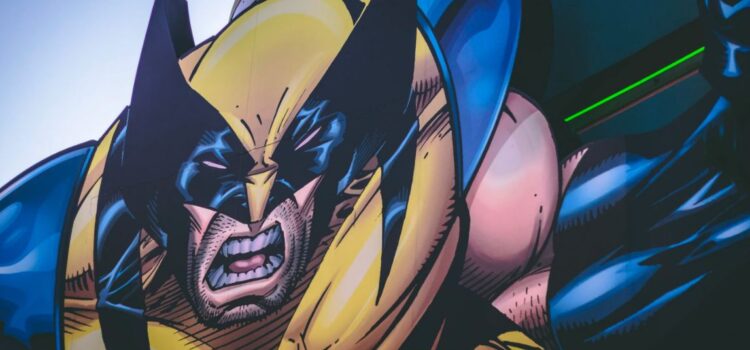

This article is an excerpt from the Shortform book guide to "The Ride of a Lifetime" by Bob Iger. Shortform has the world's best summaries and analyses of books you should be reading.
Like this article? Sign up for a free trial here .
Why did Disney buy Marvel? How did the Disney Marvel acquisition affect each company? Was it a good deal?
After the successful purchase of Pixar, Disney set its sights on a new goal: a Disney Marvel acquisition. Many were concerned that this deal would harm both companies. Marvel was too edgy for Disney and Disney would water down Marvel. But Disney CEO Bob Iger had faith it would work out.
Continue reading to learn more about the Disney Marvel acquisition.
The Disney Marvel Acquisition
Acquiring Pixar had settled the existential problem of Disney Animation. Emboldened by the ensuing success of Pixar, Disney continued studying other companies that could bring high-quality content into the Disney universe. Two companies were at the top of their list—Marvel and Lucasfilm (keeper of Star Wars). Both produced legendary characters and stories that Disney could extend further in film and television; in turn, this would fuel Disney’s consumer products and theme parks.
These weren’t new ideas. The possibility of acquiring these brands had been on previous Disney CEO Michael Eisner’s radar as well, but both Disney and Eisner were too conservative to pull the trigger for a few reasons. For one, Disney was still driven by a sense of purity and was wary of adding outside brands and characters, especially those as edgy as Marvel’s superheroes. For another, Eisner had grown weary of governing his own acquisitions, including the entertainment studio Miramax—he had constant battles with the Weinstein brothers and the board over finances and creative control.
Now, though, Disney CEO Bob Iger was open-minded and willing to take risks. Even though Disney buying Pixar had worked out fantastically, the media industry was still shifting rapidly. Disney needed to extend its lead and built its momentum, and that meant expanding the storytelling they produced. So they pursued more company-defining acquisitions in earnest.
For a number of reasons (including the suspicion that Lucas would be unwilling to sell Star Wars), Marvel was Disney’s top target. Around 2008, three years after the acquisition of Pixar, they started approaching Marvel.
Just like Pixar, Marvel had its own unique complications. First, its intellectual property was scattered. Over the years, Marvel had scattered movie rights to a bevy of other companies. Columbia Pictures and Sony owned Spider-Man; Universal owned The Incredible Hulk; Fox owned X-Men. This meant Disney couldn’t access all Marvel characters, and the branding could become scattered and confusing.
Second, Marvel’s CEO and chairman, Ike Perlmutter, was an unknown entity. He was ex-Israeli military, intensely secretive, and hard to reach. What they knew about his history was that Ike was a shrewd businessman—he had a toy company that had been acquired by Marvel in 1993, and when Marvel filed for bankruptcy in 1997, he acquired control of Marvel. Everything else was a mystery.
Making Overtures
In these circumstances, Disney started approaching Perlmutter however they could. It wasn’t easy, since Ike had no direct lines of contact. Disney reached out for six months with no response.
Desperate, they tried to find someone Ike would trust. They found a contact: a former Disney exec who had joined Marvel to develop their movies. Iger asked the contact if he could meet with Ike. The contact made no promises but since he’d do what he could.
A few months passed with no news. Finally, in June 2009, they got a call to schedule a meeting with Ike at Marvel’s offices in Manhattan.
As with Pixar and Steve Jobs, Iger decided to visit by himself. He felt it was important to approach authentically and not with a corporate army. He and Perlmutter opened the meeting casually, by discussing their backgrounds and their businesses. When Ike asked about Pixar, Iger saw an opening—he shared how respectfully they’d integrated Pixar into Disney, and he explained that Disney was interested in doing the same with the Disney Marvel acquisition.
They continued the discussion over two dinners, first by themselves and the second with their wives. In these conversations, Iger got a sense of who Ike was and what was important to him. He’d immigrated to the United States with nothing, built up a fortune through hard work and intelligence. Now, with the Disney Marvel acquisition he would earn a fortune, but it was important that the buyer not mess up what they’d accomplished.
Disney Close the Acquisition of Marvel
Over the coming weeks, the conversation deepened. On one front, Disney constructed financial models to think about the price they could pay. They planned out movie releases and box-office estimates and thought about the value gained in the theme parks and consumer products businesses.
On another front, Disney made sure they could integrate Marvel successfully. They studied how Marvel fans would react to the Disney Marvel acquisition and found the reaction would be fine, as long as Disney treated the brand respectfully and independently. Iger also assured Marvel staff the same way he’d assured Pixar staff—Marvel had created something very special, and it’d be foolish and financially ruinous for Disney to destroy that.
Iger even asked Steve Jobs to call Ike and vouch for Disney and Iger. Jobs told Ike that the Pixar sale had exceeded even his lofty expectations, and that Iger held true to his word and treated the company, brand, and people right. Ike was flattered to be called by Jobs, and this helped swing him over the fence.
On August 31, 2009, just a few months after Iger’s first meeting with Perlmutter, Disney announced they were buying Marvel for $4 billion.
Unprecedented Success
The deal wasn’t immediately seen as a great decision. Observers thought both brands would be ruined by the Disney Marvel acquisition—Marvel would be watered down, and Disney’s clean image would be dirtied. Even Iger’s colleagues, fellow CEOs, questioned his judgment, wondering why comic book characters would be worth $4 billion.
Iger, though, knew that Marvel had over seven thousand characters, and there were plenty of heroic stories to tell. Notably, Marvel Studios, led by Kevin Feige, had a master plan—the Marvel Cinematic Universe, which would bring historic characters like Iron Man and Thor to life over a decade of intersecting plotlines. These early films were instant successes, and Disney quickly realized that they had bought Marvel for a bargain. Across over twenty Marvel films, the average gross box-office for each film would cross $1 billion.
Difficult Personnel Decisions
Executing the plan correctly wasn’t without its frictions, though. Iger remembers two major personnel decisions that were difficult:
- Marvel’s corporate office was in New York, while Marvel Studios was near Hollywood. Their physical and psychological distance caused worsening frictions. Headquarters was penny-pinching and fought against budget increases and delays, which the creative staff found ignorant of the realities of movie production. In 2015, Iger decided to split Marvel Studios off from Marvel and bring it under Walt Disney Studios.
- Iger had to fire the head of Disney Studios he had personally appointed, Rich Ross. Before the role, Ross had been successful in building the Disney Channel, and Iger appointed him as head of Disney Studios in 2009 after the Marvel deal closed. Taking from the Capital Cities playbook, Iger thought that Ross could learn on the job even though he’d never managed film production before. But Ross struggled to handle the complexity of overseeing all of Disney’s entertainment production and became a bottleneck in their movie pipeline. Iger replaced Ross with an entertainment veteran, Alan Horn.
Both moves were difficult and fraught with emotional complexities, but Iger knew they were the right decisions to let Disney, Marvel, and Pixar unleash their full potentials.
Increasing Marvel’s Diversity
Marvel and Disney’s influence went beyond making financial blockbusters. They could also shape culture by increasing Marvel’s diversity.
In particular, conventional wisdom in the movie business held that female superheroes and black casts never sold well. In a regular meeting with Marvel, Iger observed that most Marvel heroes so far were white males, and they should do a better job with Marvel’s diversity—great role models and storytelling were universal—and upon hearing of Black Panther and Captain Marvel, he greenlit them for full development.
These films became cultural phenomena and financial successes. In particular, the black community felt that Black Panther represented their community in ways the film industry had never done. It reinforced how Disney had a mission beyond simple profits—they could reshape the entertainment industry and help audiences see themselves in a new, empowering light.

———End of Preview———
Like what you just read? Read the rest of the world's best book summary and analysis of Bob Iger's "The Ride of a Lifetime" at Shortform .
Here's what you'll find in our full The Ride of a Lifetime summary :
- How Bob Iger went from television crew member to CEO of Disney
- The 10 major principles behind Iger's management style and success
- How Iger resuscitated Disney Animation by buying Pixar






